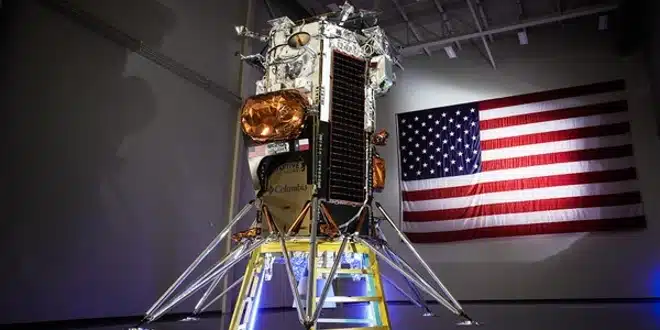On Thursday, from the Kennedy Space Center in Cape Canaveral, SpaceX’s Falcon 9 rocket embarked on a significant mission, launching the Nova-C moon lander, known as Odysseus, into space.
Below are seven crucial details about the Nova-C moon lander:
1. The Odysseus lander was constructed by Intuitive Machines, a Houston-based space company. This privately owned vehicle carries six scientific payloads from NASA aimed at gathering lunar data to support NASA’s objective of sending astronauts back to the Moon.
2. Shortly after its launch, the mission control team in Houston confirmed receiving initial communications from Odysseus, indicating the lander had begun activating its systems and navigating through space.
3. Odysseus aims to achieve a milestone as the first mission led by a private entity to successfully land on the Moon. Previous attempts by Israel’s Beresheet in 2019, Japan’s Hakuto in 2023, and the American Peregrine lander in January 2024 all failed to achieve a moon landing. Notably, Peregrine was lost due to a propellant leak shortly after its launch.
4. A successful landing by Odysseus would mark the first U.S. spacecraft to land on the Moon since the last Apollo mission in 1972. Unlike the Apollo missions, where NASA owned and operated the spacecraft, this mission involves purchasing services from the private sector.
5. The launch was initially set for Wednesday but was delayed to Thursday by SpaceX due to concerns about the temperature of the liquid methane fuel used by the Nova-C lander.
6. Odysseus is expected to touch down on February 22 at the Malapert A crater near the lunar south pole, following a weeklong journey. This follows India’s Chandrayaan-3 mission, which in 2023 became the first to soft-land at the Moon’s south pole.
7. SpaceX has plans to precede further lunar expeditions with Nova-C and other small landers to conduct detailed surveys of the lunar surface, assessing resources, and identifying hazards. The Odysseus mission will investigate space weather effects on the lunar surface, engage in radio astronomy, and test technologies for precision landing and navigation.
Future missions by Intuitive Machines, including IM-2 targeting a 2024 landing at the lunar south pole and the subsequent IM-3 mission, aim to deploy small rovers for extensive exploration.


